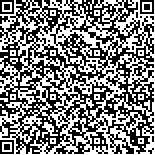| 引用本文: | 王晶晶,姚勤,黄桦,何瑾,周琼,李骞,杨成金,张峻.UFLC-MS/MS测定人血浆中度洛西汀浓度及临床血药浓度[J].中国现代应用药学,2019,36(8):951-955. |
| WANG Jingjing,YAO qin,HUANG Hua,HE Jin,ZHOU Qiong,LI Qian,YANG Chengjin,ZHANG Jun.Duloxetine Concentration Determination in Human Plasma with UFLC-MS/MS and Applied for Therapeutic Drug Monitoring[J].Chin J Mod Appl Pharm(中国现代应用药学),2019,36(8):951-955. |
|
| 本文已被:浏览 3167次 下载 1767次 |

码上扫一扫! |
|
|
| UFLC-MS/MS测定人血浆中度洛西汀浓度及临床血药浓度 |
|
王晶晶1, 姚勤1, 黄桦1, 何瑾1, 周琼1, 李骞1, 杨成金2, 张峻1
|
|
1.昆明医科大学第一附属医院临床药学科, 昆明 650003;2.云南白药集团中药资源有限公司, 昆明 650502
|
|
| 摘要: |
| 目的 建立超快速液相-串联质谱法(UFLC-MS/MS)测定人血浆中度洛西汀血药浓度,并应用该方法进行血药浓度监测。方法 以格列苯脲为内标,采用蛋白沉淀前处理方法,使用Phenomenex Synergi Hydro-RP色谱柱(2.00 mm×50 mm,0.004 mm),以0.1%甲酸-乙腈和0.1%甲酸-水溶液为流动相,流速0.6 mL·min-1进行梯度洗脱。质谱采用电喷雾离子源(ESI),以多反应监测(MRM)扫描模式,在正离子电离模式下进行测定,度洛西汀和格列苯脲的定量分析离子对分别为m/z 298.197/154.200和m/z 494.200/369.100。结果 血浆中无干扰测定的内源性物质,线性范围为5~200 ng·mL-1,r=0.999 3,相对回收率为93.64%~105.3%,高、中、低日内精密度(RSD)<10.0%,日间精密度(RSD)<8.2%,提取回收率、基质效应、稳定性均通过方法学验证。42例患者度洛西汀血药浓度水平受日剂量影响,年龄对度洛西汀血药浓度影响较大,性别对其血药浓度无影响。结论 该方法简单快速、准确、灵敏度高,适用于度洛西汀的临床治疗药物浓度监测。度洛西汀体内血药浓度个体差异较大,受药动学特点、生理因素(年龄)影响,因此需规律监测血药浓度,并实施个体化用药,以提高临床疗效,减少不良反应。 |
| 关键词: 度洛西汀 超快速液相-串联质谱法 治疗药物监测 血药浓度 |
| DOI:10.13748/j.cnki.issn1007-7693.2019.08.011 |
| 分类号:R917.101 |
| 基金项目:云南省教育厅科学研究基金项目资助(2017zDX166);云南省高层次卫生计生技术人才培养专项经费资助(L-201614;H-2017020;H-2017051;H-2017052) |
|
| Duloxetine Concentration Determination in Human Plasma with UFLC-MS/MS and Applied for Therapeutic Drug Monitoring |
|
WANG Jingjing1, YAO qin1, HUANG Hua1, HE Jin1, ZHOU Qiong1, LI Qian1, YANG Chengjin2, ZHANG Jun1
|
|
1.Department of Clinical Pharmacy, First Affiliated Hospital of Kunming Medical University, Kunming 650003, China;2.Yunnan Baiyao Co., Ltd., Kunming 650502, China
|
| Abstract: |
| OBJECTIVE To establish an ultra-high performance liquid chromatography method for the determination of duloxetine in human plasma and to apply this method for therapeutic drug monitoring (TDM) of duloxetine. METHODS The LC-MS/MS was applied for determination of duloxetine plasma concentration with glibenclamide as internal standard and Phenomenex Synergi Hydro-RP(2.00 mm×50 mm, 0.004 mm) as column. The mobile phases were consisted of 0.1% formic acid in acetonitrile and 0.1% formic acid in water and were pumped at a flow rate of 0.6 mL·min-1. Quantitative analysis was conducted in the multiple reaction monitoring modes with product ion transitions of m/z 298.197/154.200 and m/z 494.200/369.100 for duloxetine and internal standard, respectively. RESULTS Chromatograms showed no endogenous interfereing peaks in the respective blank human plasma samples. The calibration was linear in the concentration range with 5-200 ng·mL-1(r=0.999 3) and the relative recoveries were at 93.64%-105.3%. Inter-day and intra-day RSD were less than 10.0% and 8.2%, respectively. Both the extraction recovery matrix effect and the stability were validated for duloxetine in human plasma. The plasma concentration of duloxetine levels were significantly affected by age(P<0.05), but not by genter. CONCLUSION This method is simple, rapid, specific and precise for the determination of duloxetine in human plasma and it could be widely used for TDM. The plasma concentrations of duloxetine were variability, especially significantly affected by age. Rotine TDM of duloxetine may improve the treatment response. |
| Key words: duloxetine UFLC-MS/MS therapeutic drug monitoring plasma concentration |
